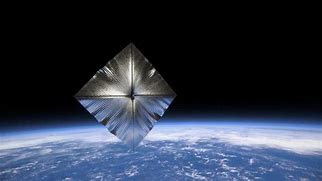DAILY INNOVATION BRIEF by Maryanne Kane, Journalist
DAILY INNOVATION BRIEF
By Journalists Edward Kane & Maryanne Kane
NASA ASKED TO SEARCH FOR LOCH NESS MONSTER
Source: Loch Ness Center
- NASA expertise has been requested to find Nessie, the Loch Ness monster, in an upcoming major search. Here's what we know:
- The Loch Ness Monster (Nessie) has captured the attention of people around the world since it was spotted in 1933
- A new, major search will commence May 30th to June 2nd
- The Loch Ness Center has asked NASA to bring in its Advanced Imaging Technology to scan the Loch for the 90th anniversary search
- 1,156 sightings of Nessie are registered at the Center
- An international search team is being deployed from numerous countries around the world
- Sightings of a monster in the River Ness go back to 585 AD when St. Columba spotted it
- Some believe it's a surviving dinosaur called a long-necked plesiosaur
- Others think it's a giant sturgeon or catfish
- Wherever you are Nessie...better find your best hiding place. NASA, which has declined to say as yet if they're accepting the challenge, may be coming to get you!
NASA TO LAUNCH SOLAR SAIL IN SPACE
- NASA is ready to launch a Next-G solar sail into space to test its new design, new composites and new technologies. In essence it's an alternative to traditional spacecraft with many compelling benefits. Here's what you need to know:
- This Next-G solar sail technology will be launched into deep space aboard Rocket Lab's Electron rocket from New Zealand
- Called Lightweight Sailor
- Will sail into space from a microwave-sized CubeSat made by NanoAvionics to test its new composite boom
- Not only will the sail harvest sunshine into electricity to power itself
- It is also designed to get propulsion from the solar winds & "pressure of sunshine" in deep space
- This is a new design that NASA believes will be highly effective
- It offers a number of advantages over traditional spacecraft including:
- Longer lasting
- Much less expensive to operate
- Sustainably solar powered & never runs out of fuel
- Propulsion system is very lightweight
- NASA says this new tech could advance future space travel and provide new knowledge about the Sun & solar system.
.jpg)




%20(1)%20(1)%20(3)%20(2)%20(2).jpg)


Comments
Post a Comment